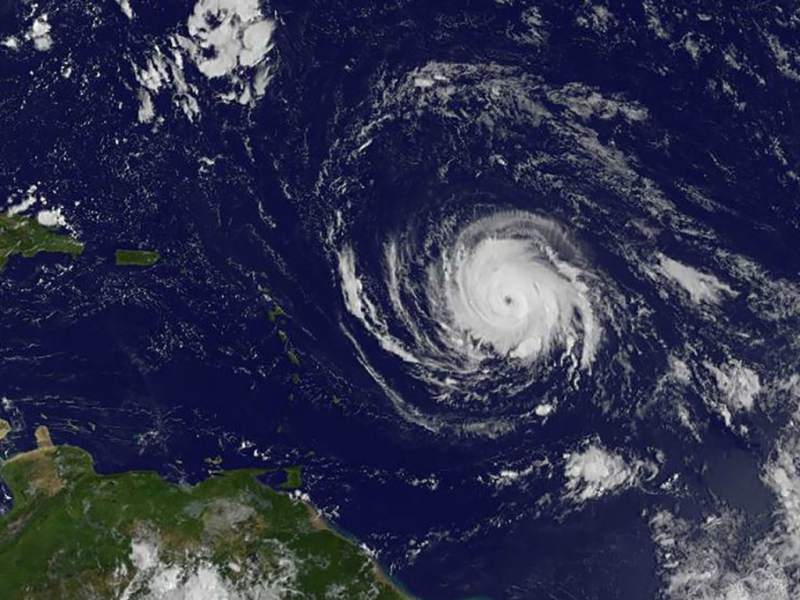With category 5 maximum sustained winds of 185 mph, Hurricane Irma is threatening Puerto Rico and the U.S. Virgin Islands, on a potential track that threatens south Florida.
Just two weeks after Hurricane Harvey hammered the Texas energy coast, Irma’s threat to the islands and south Florida triggered accelerated preparations Tuesday. At San Juan, P.R., the Coast Guard captain of the port set port condition Yankee Tuesday morning, directing oceangoing vessels of 500 tons and more to depart unless they have approved applications to stay in port.
At 8 p.m. local time, the order to upgrade to condition Zulu was issued for a complete port shutdown for Puerto Rico and the Virgin Islands, anticipating the arrival of tropical storm force winds over 39 mph.
With the five-day outlook from the National Hurricane Center showing potential paths over the Florida Keys, Monroe County officials ordered a mandatory evacuation of the islands’ 70,000 residents. Florida Gov. Rick Scott declared a state of emergency and activated the National Guard.

Florida ports and maritime interests began their preparations. Beyond an initial Florida landfall this weekend, longer range models posited a northward turn and possible tracks up the Florida peninsula that could impact both the Atlantic and Gulf coasts.
“The hurricane force winds in Irma are wider than Florida,” Bryan Norcross, a hurricane specialist at the Weather Channel, warned on Twitter. “You won’t need a direct hit to get Wilma-type winds & storm surge on both coasts.” Norcross is famed for his prescient warnings of Hurricane Andrew’s danger to south Florida in August 1992.

The drillship Paragon DPDS1 was recovered from Aransas Pass Sunday. Coast Guard photo/PO2 Cory Mendenhall
With water levels dropping and ports and refineries reopening, the Texas energy coast continued to recover. On Sunday the 449’x105’x26′ drillship Paragon DPDS1 was recovered from where it had grounded in Aransas Pass during the storm. More channels were reopened around Houston, Galveston and Texas City, and daylight operations resumed at Freeport.
By Monday morning, most of the 102 western Gulf of Mexico production platforms evacuated before Harvey had been boarded, the federal Bureau of Safety and Environmental Enforcement reported, and operators had not reported finding major damage.
Based on the data from the operators, 14 platforms were still unmanned on Monday morning. About 7% of Gulf oil production and 8% of the gas remained shut-in, BSEE estimated.
On shore, refiners worked to get facilities back online. Valero Energy reported its Galveston and Texas City refineries were back to pre-hurricane production levels, while its Three Rivers facility was ramping back up and evaluations at the Port Arthur refinery were in final stages. Motiva's Port Arthur refinery, the nation's largest, was resuming operations, the company said Tuesday. ExxonMobil’s Beaumont refinery remained closed due to flooding, while the company said it was “making good progress” toward a refinery restart at Baytown.





